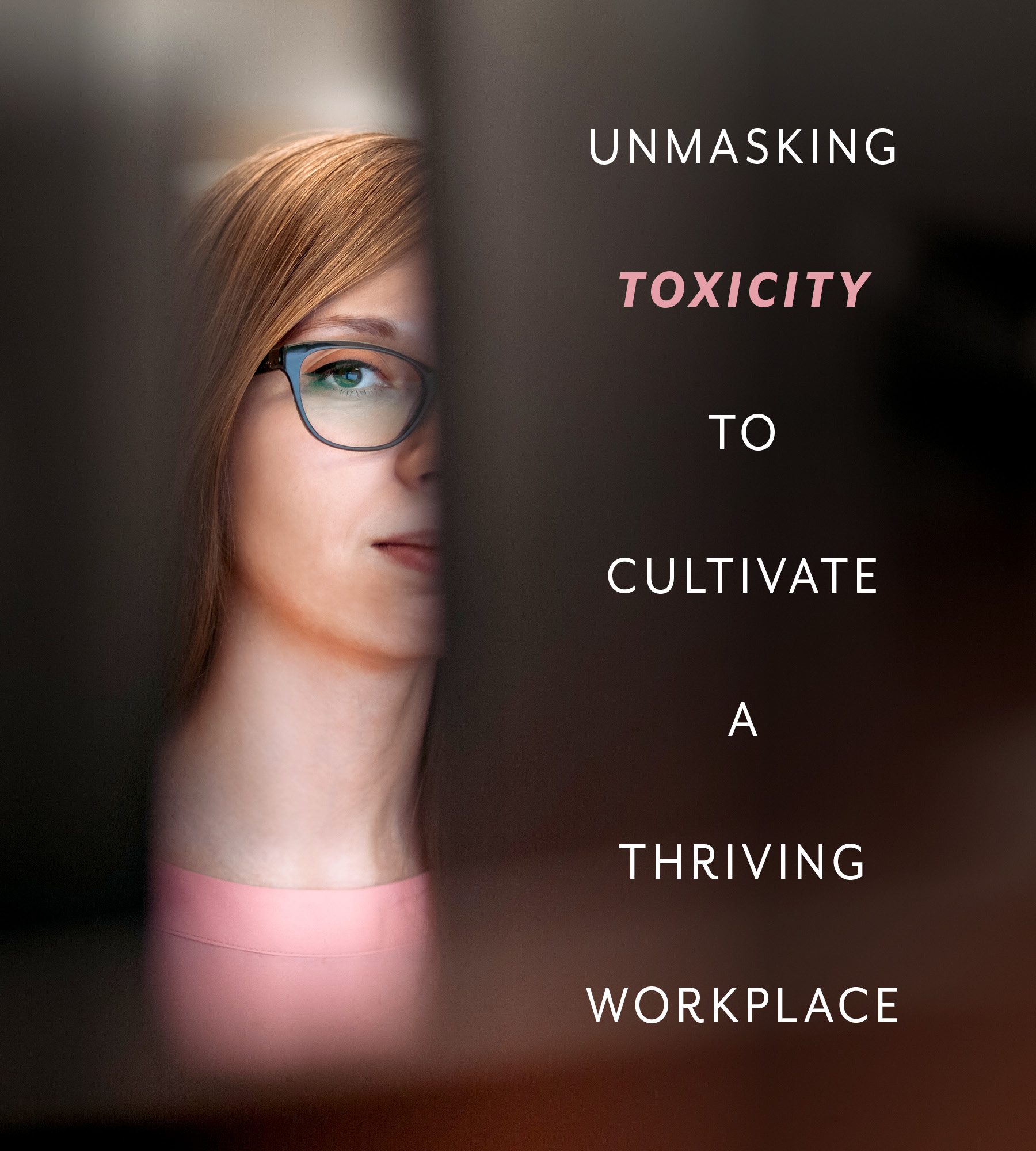Language
You can read the magazine in one of the following languages
Recent studies have brought to light the widespread prevalence of toxic workplace cultures, revealing that such environments are 10.4 times more likely to drive employees to quit. This sobering statistic emphasizes the urgent need for organizations to adopt a systematic and structured approach in understanding and transforming workplace cultures.
In today’s dynamic and evolving business landscape, creating a workplace environment where both individuals and teams can thrive isn’t just a goal – it’s a strategic necessity.
In every organization, culture operates at multiple levels, each influencing the overall work environment and employee experience.
The Psychological Safety Institute (PSI) Culture Framework offers a comprehensive understanding of organizational dynamics by defining five distinct levels of culture. These levels represent the different types of culture that exist within an organization, each providing a unique perspective on how culture manifests and influences the workplace.

Creating a workplace environment where both individuals and teams can thrive isn’t just a goal – it’s a strategic necessity.
Understanding these five distinct levels – personal culture, 1-2-1 culture, team culture, collaboration culture and organization culture – provides a framework for identifying and addressing the dynamics that shape workplace interactions and outcomes.
From individual beliefs and behaviors to team dynamics and organizational practices, each level plays a crucial role in cultivating a cohesive, productive and psychologically safe workplace environment.
Meanwhile, various dimensions contribute to the health and effectiveness of these cultures. Each dimension focuses on specific aspects of interactions and practices within the organization.
The PSI Culture Framework underscores the interconnectedness of these levels, illustrating how individual beliefs, communication skills, team interactions, collaborative efforts and overall organizational practices collectively shape workplace culture and influence employee wellbeing.
By understanding both the levels and dimensions, organizations can create a healthier and psychologically safe work environment.
Personal culture: This level of culture centers on the individual beliefs, values and behaviors that shape each employee’s contributions to the workplace. It emphasizes the importance of emotional intelligence, self-awareness, authenticity, personal accountability, motivation, work ethic, resilience and effective coping mechanisms.
1-2-1 culture: Shaped by direct interactions between individuals within the organization, such as manager-employee relationships or peer-to-peer interactions, this level of culture encompasses effective communication skills and styles, trust levels, feedback mechanisms and approaches to conflict resolution.
Team culture: This level of culture relates to the dynamics, interactions and norms established within specific teams or work groups. It focuses on cultivating cohesion among team members, promoting shared goals, ensuring role clarity, inclusivity and collaboration to achieve collective objectives. A positive team culture enhances teamwork, boosts productivity and supports innovation.
Cultivating a thriving work environment demands proactive measures to identify and address toxic hotspots across all levels and dimensions of organizational culture.
Collaboration culture: This level addresses the culture arising from interactions and collaborations between different departments or teams within the organization. It emphasizes interdepartmental relations, cooperation, transparency, knowledge sharing, collaborative problem-solving and making collective decisions across organizational boundaries.
Organization culture: At the highest level, organization culture encompasses the overarching values, norms, policies and practices that define the workplace environment. It is shaped by leadership styles, organizational structure and systems, communication channels, reward systems and alignment of organizational values with strategic goals. Organization culture profoundly influences employee engagement, morale, organizational effectiveness and the overall reputation of the company.
In addition to understanding the five levels of culture, organizations must navigate the six dimensions within the PSI Culture Framework. The dimensions represent the different dynamics and elements that contribute to a healthy workplace culture. Each dimension focuses on specific aspects of interactions and practices within the organization.
These six dimensions serve as critical indicators of organizational health and potential toxicity hotspots:
Individual dynamics: Focuses on the personal thoughts, beliefs, values and attitudes that influence individual behavior. It includes cultivating self-awareness, understanding triggers, practicing emotional regulation in the workplace, creating a comfortable and safe environment to bring one’s authentic self to interactions and developing emotional intelligence. Aligned with personal culture, this dimension plays a crucial role in personal development and shapes the broader dynamics within the workplace.
Inter-personal dynamics: Highlights the quality of relationships between individuals, encompassing communication skills, navigating complex conversations, building trust and effectively managing conflicts. This dimension aligns with 1-2-1 culture.

This structured approach helps in diagnosing and addressing issues at the appropriate level, ensuring a holistic and effective strategy for improving workplace culture.
Team dynamics: Explores navigating and leveraging team dynamics and personalities, cultivating social dynamics, establishing group norms, promoting belonging and inclusivity and enhancing team cohesion and performance. This dimension aligns with team culture.
Cross-functional dynamics: Addresses collaboration across departments, emphasizing information sharing, role clarity, creating safe spaces, transparent decision-making and collective problem-solving. This dimension aligns with collaboration culture.
Workload dynamics: Concerns the demands placed on employees, including workload management, ensuring work–life balance and effectively distributing tasks to support productivity and well-being. This dimension influences individual performance, team interactions and overall workplace dynamics at all organizational levels. Understanding and managing workload dynamics is essential for cultivating a balanced and productive work environment.
Operational dynamics: Centers on organizational structure, leadership practices, policies, decision-making processes and creating a conducive workplace environment for all employees. This dimension aligns with organization culture.
This structured approach helps in diagnosing and addressing issues at the appropriate level, ensuring a holistic and effective strategy for improving workplace culture.
Cultivating a thriving work environment hinges on identifying and addressing potential toxic hotspots within each culture level and dimension.
Toxicity can manifest in various forms. Within personal culture, toxicity may appear as a lack of accountability, frequent conflicts or deficiencies in emotional intelligence among individuals.
In 1-2-1 culture, strained relationships, poor communication or unresolved conflicts with managers often signal toxic dynamics. Team culture can exhibit toxicity through cliques, exclusionary behaviors or a lack of cohesion and trust among members.
Cross-functional dynamics might reveal siloed working practices, inter-departmental conflicts or unclear roles and responsibilities. Workload dynamics often reflect toxicity with unsustainable workloads, unrealistic deadlines or imbalances in work-life integration.
Recognizing toxic culture hotspots across all culture levels and dimensions requires keen observation and targeted assessment.
Finally, operational dynamics may indicate toxicity through ambiguous decision-making, hierarchical communication barriers or inconsistent application of policies. Left unaddressed, these issues can damage morale, obstruct collaboration and hinder organizational success.
Recognizing toxic culture hotspots across all culture levels and dimensions requires keen observation and targeted assessment.
By leveraging the Hierarchy of Psychological Safety and the 5 Pillars of Psychological Safety, organizations gain a comprehensive framework to identify root causes effectively. This structured approach pinpoints areas within each culture level (personal, 1-2-1, team, collaboration and organization) and dimension (individual, inter-personal, team, cross-functional, workload and operational dynamics) where psychological safety may be compromised.
The five pillars (self, social, collaboration, curiosity and creativity) provide actionable strategies to effectively mitigate these issues. Ultimately, this approach not only diagnoses underlying problems but also guides organizations in implementing targeted interventions to cultivate a healthier, psychologically safe environment.
Cultivating a thriving work environment demands proactive measures to identify and address toxic hotspots across all levels and dimensions of organizational culture.
By recognizing the signs and leveraging frameworks, organizations can cultivate an environment where employees feel safe, valued and empowered to thrive. This not only enhances productivity and innovation but also increases employee retention and overall organizational success.

By understanding both the levels and dimensions, organizations can create a healthier and psychologically safe work environment.
Take decisive action now. Rigorously evaluate your organizational culture. Identify areas where trust is lacking, communication is ineffective or workload expectations are unsustainable. Use these insights to implement targeted interventions that prioritize psychological safety and cultivate a culture of authenticity, inclusivity and collaboration, thereby creating a work environment where people thrive.
Your commitment to cultivating a positive work environment will not only transform your organization but also drive significant positive change, setting a new standard for industry leadership.

Gina Battye
Contributor Collective Member
Gina Battye is the Founder and CEO of the Psychological Safety Institute. Her mission is to create work environments where people thrive. Her expertise has been sought after by the world’s largest multinational corporations, spanning countries and cultures. As the visionary behind the 5 Pillars of Psychological Safety, the Hierarchy of Psychological Safety and Lux, the psychological safety diagnostic tool, Gina’s groundbreaking contributions have earned widespread recognition. For more information visit https://www.ginabattye.com/
